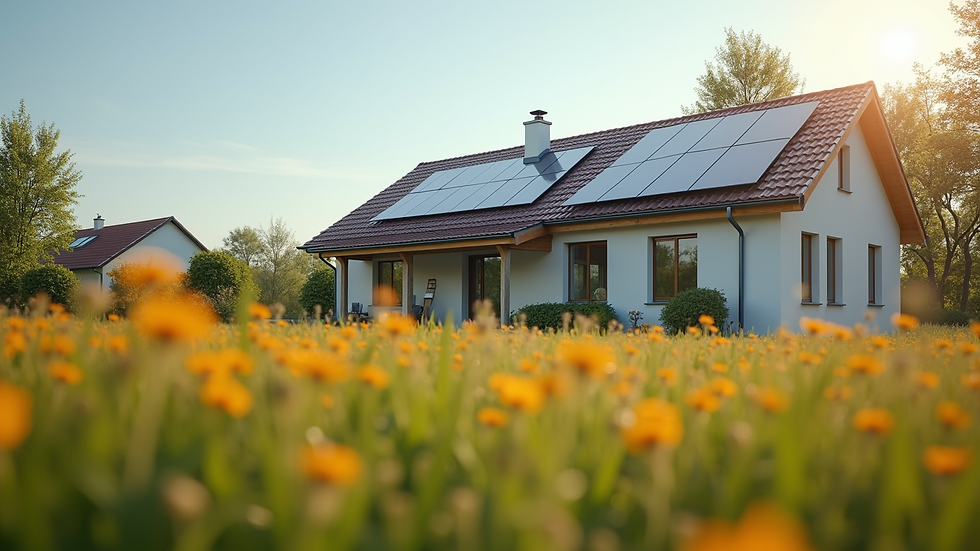Top Methods for Efficient Home Construction
- Mr Engineer
- Oct 13
- 4 min read
Building a home is a significant investment, and doing it efficiently can save time, money, and resources. Over the years, I have seen how adopting the right strategies can transform a construction project from a lengthy, costly ordeal into a streamlined, cost-effective process. In this post, I will share practical methods to improve residential construction efficiency. These methods are designed to help you achieve better results with less waste and more precision.
Understanding Residential Construction Efficiency
Residential construction efficiency means completing building projects with optimal use of materials, labor, and time while maintaining high quality. It involves planning, design, and execution phases that reduce delays and minimize costs. Efficiency is not just about speed; it is about smart work and sustainable practices.
One key to achieving this is integrating energy-efficient designs and materials from the start. This approach not only reduces the environmental impact but also lowers long-term operational costs for homeowners. For example, using insulated panels and energy-efficient windows can significantly reduce heating and cooling expenses.
Another important factor is the use of modern construction technologies. Tools like Building Information Modeling (BIM) allow for precise planning and coordination among architects, engineers, and builders. This reduces errors and rework, which are common causes of inefficiency.

Key Strategies to Enhance Residential Construction Efficiency
To improve efficiency in home building, I recommend focusing on several core strategies:
Pre-Construction Planning
Detailed planning before breaking ground is essential. This includes site analysis, budgeting, and scheduling. A well-prepared plan anticipates potential challenges and allocates resources effectively.
Modular and Prefabricated Components
Using prefabricated walls, floors, and roof sections can speed up construction. These components are built in controlled factory settings, ensuring quality and reducing on-site labor.
Sustainable Material Selection
Choosing materials that are durable, recyclable, and locally sourced reduces waste and transportation costs. Materials like recycled steel, bamboo, and low-VOC paints contribute to a healthier home environment.
Skilled Workforce and Training
Employing experienced tradespeople and providing ongoing training ensures tasks are done right the first time. Skilled workers reduce errors and improve overall productivity.
Efficient Site Management
Organizing the construction site to minimize movement and delays is crucial. This includes proper storage of materials, clear communication channels, and safety protocols.
Energy-Efficient Systems Integration
Incorporating solar panels, efficient HVAC systems, and smart home technologies during construction can enhance the home's performance and reduce future energy bills.
By combining these strategies, builders can deliver homes faster, with fewer resources, and better quality.
What is the Most Efficient Style of House to Build?
When considering the most efficient style of house to build, simplicity and compactness are key. Designs that minimize complex shapes and maximize usable space tend to be more efficient. For example, rectangular or square floor plans are easier and cheaper to construct than irregular or highly customized shapes.
Single-story homes often have lower construction costs and are easier to insulate and maintain. However, multi-story homes can save on land use and may be more suitable for smaller plots.
Another factor is the roof design. Simple gable or hip roofs are less expensive and quicker to build than intricate rooflines. They also perform better in terms of water drainage and durability.
In terms of materials, lightweight framing such as timber or steel can speed up construction and improve energy efficiency. Additionally, designs that incorporate passive solar principles—like large north-facing windows in Australia—help reduce heating and cooling needs.

Leveraging Technology for Better Efficiency
Technology plays a vital role in modern home construction. Digital tools and machinery can reduce human error and speed up processes. Here are some examples:
Building Information Modeling (BIM): This software creates detailed 3D models of the building, allowing all stakeholders to visualize and coordinate the project. BIM helps identify clashes and design issues before construction begins.
Drones: Used for site surveys and inspections, drones provide accurate data quickly and safely. This reduces the need for manual measurements and improves site monitoring.
Automated Machinery: Equipment like robotic bricklayers and 3D printers can perform repetitive tasks faster and with consistent quality.
Project Management Software: These platforms help track progress, manage budgets, and communicate with teams in real time.
By integrating these technologies, construction projects become more predictable and manageable, leading to better outcomes.
Practical Tips for Homeowners and Builders
Whether you are building your own home or managing a construction project, here are some actionable tips to improve efficiency:
Set Clear Goals: Define your budget, timeline, and quality expectations upfront. Clear goals help keep the project on track.
Choose the Right Builder: Select a builder with a proven track record in efficient construction. Ask for references and examples of past projects.
Use Standardized Designs: Custom designs can be beautiful but often increase costs and delays. Standard plans that have been tested for efficiency are a safer choice.
Plan for Energy Efficiency: Invest in insulation, ventilation, and energy-saving appliances. These features pay off in the long run.
Monitor Progress Regularly: Frequent site visits and communication with the builder help catch issues early.
Be Flexible: Construction projects can face unexpected challenges. Being adaptable helps avoid costly changes.
For those interested in exploring more about efficient construction methods, I recommend consulting with specialists who focus on energy-efficient residential construction. Their expertise can guide you through the best practices and innovations available.

Moving Forward with Efficiency in Home Building
Efficiency in home construction is achievable with the right approach. By focusing on planning, design simplicity, technology, and sustainable materials, you can build homes that are cost-effective, durable, and environmentally friendly.
Efficiency Australia PTY LTD is committed to helping clients achieve these goals. Their specialized engineering consultancy and energy-efficient solutions set a high standard in the Australian residential construction market.
If you are planning a new build or renovation, consider these methods to maximize your investment and reduce your environmental footprint. Efficient construction is not just a trend; it is the future of building homes that last and perform well.






Comments